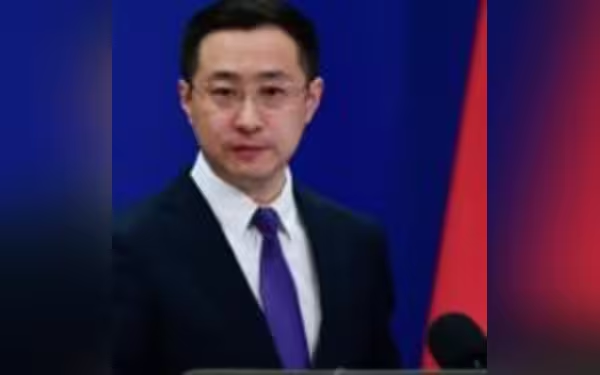Monday, November 25, 2024 08:32 AM
China-Southeast Asia Cooperation: A Path to Development and Stability
- China and Southeast Asia enhance cooperation for regional stability.
- High-level meetings strengthen ties between China and ASEAN nations.
- Infrastructure projects boost trade and connectivity in the region.
 Image Credits: pakistantoday
Image Credits: pakistantodayChina and Southeast Asia intensify cooperation, focusing on development, trade, and regional stability through high-level meetings and infrastructure projects.
In recent times, the relationship between China and Southeast Asian countries has seen significant growth, reflecting a shared desire for cooperation and development. This development is not just a matter of politics; it represents a deeper connection among nations that are striving for solidarity in a rapidly changing world. The Chinese Foreign Ministry has highlighted these exchanges, emphasizing their importance in fostering regional stability and prosperity.
According to Chinese Foreign Ministry Spokesperson Lin Jian, the interactions between China and Southeast Asian nations have reached new heights. This includes a series of high-level meetings, particularly during the recent 31st APEC Economic Leaders’ Meeting held in Peru. Notably, President Xi Jinping engaged in discussions with leaders from Singapore and Thailand, showcasing the commitment to strengthen ties.
Moreover, Premier Li Qiang's participation in the eighth Greater Mekong Subregion Summit, along with leaders from Cambodia, Laos, Myanmar, Thailand, and Vietnam, further illustrates the collaborative spirit among these nations. The visits of Vice Premier Ding Xuexiang to Singapore and Vice President Han Zheng to Indonesia and Brunei also signify the importance of these relationships.
Lin Jian pointed out several achievements that have emerged from these interactions. For instance, important agreements have been reached between China and Indonesia, focusing on building a community with a shared future. Similarly, collaborations with Malaysia and Mekong countries have reached new levels, indicating a robust framework for future cooperation.
Significant infrastructure projects, such as the Jakarta-Bandung High-speed Railway and the China-Laos Railway, have also been highlighted. These projects not only enhance transportation but also serve as vital links for trade and tourism, benefiting millions of passengers. The steady progress of Malaysia’s East Coast Rail Link and the launch of the China-Laos-Thailand international freight train service further exemplify the growing connectivity in the region.
Additionally, the negotiations for the China-ASEAN Free Trade Agreement (FTA) 3.0 have made substantial progress, promising to enhance economic ties. The introduction of visa-free arrangements between China and several Southeast Asian countries, including Thailand, Malaysia, Singapore, and Laos, has made travel easier and fostered people-to-people connections.
Lin Jian also addressed maritime cooperation, stating that China and its Southeast Asian partners have reached important agreements to manage maritime differences and enhance stability in the South China Sea. This is crucial for maintaining peace in a region that is vital for global trade.
The intensified exchanges between China and Southeast Asia are not merely diplomatic gestures; they represent a collective aspiration for a prosperous future. As these nations continue to collaborate on various fronts, from trade to infrastructure and maritime security, they are laying the groundwork for a more integrated and stable region. This cooperation is essential not only for the countries involved but also for the broader Asia-Pacific community, as it fosters a spirit of unity and shared progress.













